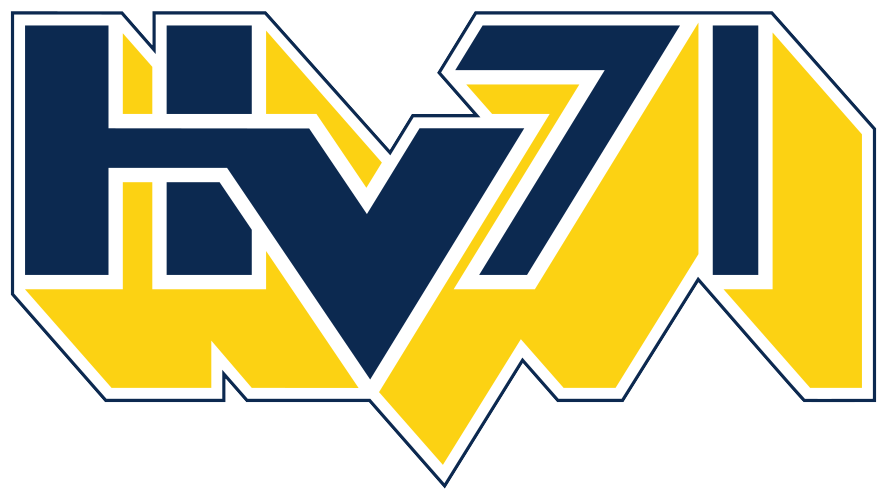
Jamiro Reber (C, L, 5’10”, 180, HV71, 09/04/2006)
Jamiro Reber is a high-compete, high-motor winger who earned a regular role in Sweden’s top men’s league as an 18-year-old—a testament to his work ethic, skill level and coach’s trust. His 14:32 average TOI, including PP and PK usage, reflects a player trusted in multiple situations, even if he wasn’t relied upon for offense. His game is built around pace, energy, and retrievals. Defensively Reber attacks puck carriers, finishes his routes, and forces turnovers through anticipation, stick placement and effort. However, limitations in his puck skill and strength raise concerns about his ability to generate offense or maintain possession at the National League level.
Why Jamiro Reber Should Be an NHL Draft Pick
1) Effort, Motor, and Forechecking
Reber is relentless without the puck. He averages 10 puck battles per game and wins 42%, which, while below average in win percentage, highlights just how active and engaged he is as a younger player in the SHL. His 0.18 penalties drawn per game are directly tied to how hard he plays. He pressures defenders, tracks with intensity, and consistently initiates contact even though he isn’t overly physical (0.41 H+ per game).
2) Scoring Efficiency & Slot Timing
Despite limited volume (2.0 shots/game), Reber creates 1.03 Grade-A chances/game and converts at a 13% SC%, a strong ratio for a forward not earning key power play minutes. He finds soft ice well and times his entries into high-danger areas. His quick release in tight makes him a threat off retrievals or scrambles, and he’s shown he can finish when in range.
3) Retrievals and Puck Support
Reber plays a smart support game. He averages 3.8 puck losses, but counters that with 2.7 takeaways and 1.31 puck recoveries after shots—solid numbers for a rookie in the SHL. He’s more effective as a disruptor and transition facilitator than a sustained-zone presence, but his forecheck-to-offense transitions are valuable and translate to the North American game.
Why Jamiro Reber Should Not Be an NHL Draft Pick
1) Puck Handling & Offensive Skillset
Reber struggles with puck control under pressure or while a defender is leaning on him. Multiple Neutral Zone evaluations cite his difficulty stickhandling at top speed and an inability to maintain possession in 1v1 or tight-area situations. His pass completion rate (85%) is only average, and his 0.79 pre-shot passes/game show limited offensive vision, creativity and below-average playmaking. At this point there are too many times he overhandles the puck and turns it over when pressured, neutralizing his own energy shifts.
2) Undersized Grinder Profile Without Elite Skill or Pace
At 5’10”, 176 lbs, Reber lacks the physical tools to compensate for his skill shortcomings. He isn’t particularly fast in open ice, nor does he possess a separation gear. Without a high-end offensive ceiling, and with limited strength (42% puck battle win rate), there are questions about whether his motor can compensate long-term in North American pro environments.
3) Limited Progression Curve
While it’s impressive he played in the SHL full-time at 18, Reber’s production was stagnant (15 points, -11 in 47 GP) and he didn’t show steady growth in puck skills or impact. His raw motor hasn’t yet translated to consistent possession or offensive value, and without that step, he risks becoming a player who works hard but doesn’t produce or have the frame to be a bottom-six role player in the NHL.
Projection & Development Outlook
Player Projection: Bottom-six energy winger who plays hard, kills penalties, and brings value on forecheck/PK.
Development Focus:
Improve puck handling under pressure
Add strength to improve battle win rate
Simplify puck decisions—short passes, north-south game
Increase shot volume
Draft Recommendation: 6th — 7th round
Jamiro Reber is a bottom-six style winger who brings a lot of the intangibles teams like—effort, consistency, and defensive value—but doesn’t yet have the puck skill or offensive ceiling to project comfortably into an NHL role. If he continues to round out his game and find ways to generate offense with his motor, he could become a contributor at the AHL level with a longshot path to the NHL. A team with multiple late-round picks and a development system that values grit over flash may find value in investing in him.
